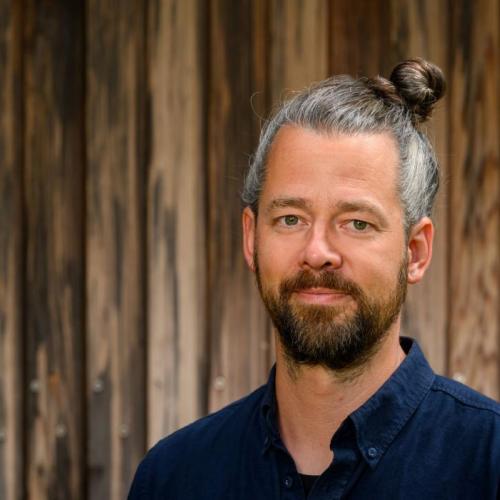NABU project leader Rocco Buchta explains the restoration measures to the IGB scientists. Photo: Graupner/IGB.
At the Lower Havel, the NABU manages a large and ambitious restoration project. On 90 km river length, old backwaters are reattached to the mainstream, dikes and bank protections are removed. Riparian forests are expected to regrow. On the trip, the IGB group had the possibility to look at the different measures from a scientific point of view.
During the exchange of researchers and nature protection practitioners it became clear that ecologic knowledge is not sufficient to restore a river. In the concrete on-site projects, it is important to know and understand the constellation of interest groups involved. If restoration measures can be done in the desired time and extent is hence depending on the successful communication with policymakers, authorities, associations and users of the area. Rocco Buchta, head of the NABU Havel project, underlined the high relevance of these networks and the trust of the local people.
The IGB scientists also had a stopover at the Schröder Fishery at Lake Gülpe that is connected to the Havel river. Fisherman Mr. Schröder, running the business in 4th generation, explained the currently difficult situation of Germany’s Inland Fisheries. Within the discussion with the IGB group, he highlighted the importance of a smart marketing strategy to find new customers. One example is the Chinese midden crab, an invasive and abundant species in our freshwaters. There is no traditional consumer market for this species in Germany, but the demand of the Asian gastronomy is very high, since it is regarded as a real delicacy.
The excursion was a follow-up event of the workshop with scientists and environmental associations at IGB and took part within the knowledge transfer and the SSI strategy at IGB.
Wide floodplains. Photo: © Graupner/IGB
Wide floodplains. Photo: © Graupner/IGB
What intersections do science and restoration practice have? Julia Mußbach (NABU) talking with IGB scientist Martin Friedrichs. Foto: © Graupner/IGB
Geese overflying a reconnected backwater. Foto: © Graupner/IGB
In a good mood: IGB scientist Stella Berger and colleagues exploring the restored Havel sections. Foto: © Graupner/IGB
A sea eagle leaving his look-out tree. Foto: © Graupner/IGB
NABU overview map showing restoration measures. Foto: © Graupner/IGB
Swans, geese, ducks and deer in the meadows. Foto: © Graupner/IGB
Exkursion into practice: IGB scientists on deck. Foto: © Graupner/IGB
The river Havel will be restored on about 90km length. Foto: © Graupner/IGB
How is the current situation in inland fisheries? Wolfgang Schröder (l.) reports from his daily work as a local fisherman. Foto: © Graupner/IGB
Inland fisheries need clever marketing strategies: the Schröder Fishery at Lake Gülpe. Foto: © Graupner/IGB
Hopes to seize a chance: "domestic" stork at the Schröder fishery looking out for tasty leavings. Foto: © Graupner/IGB





